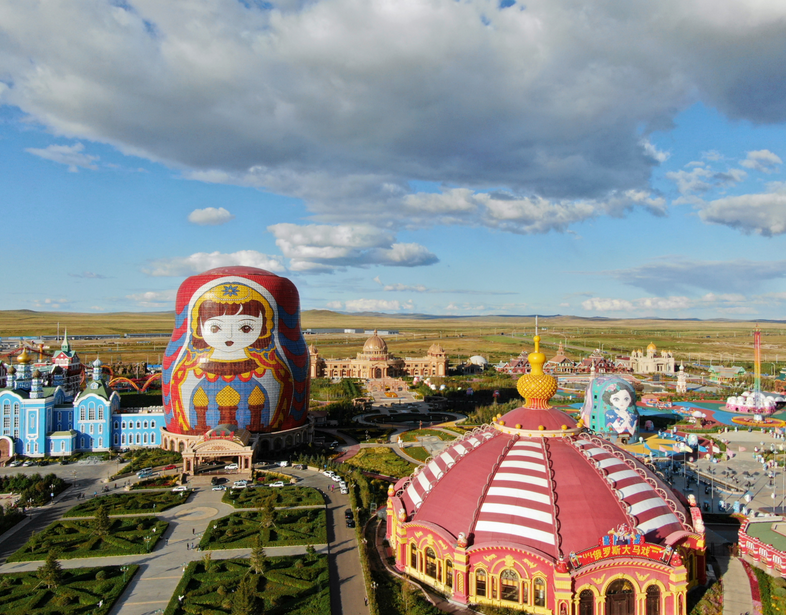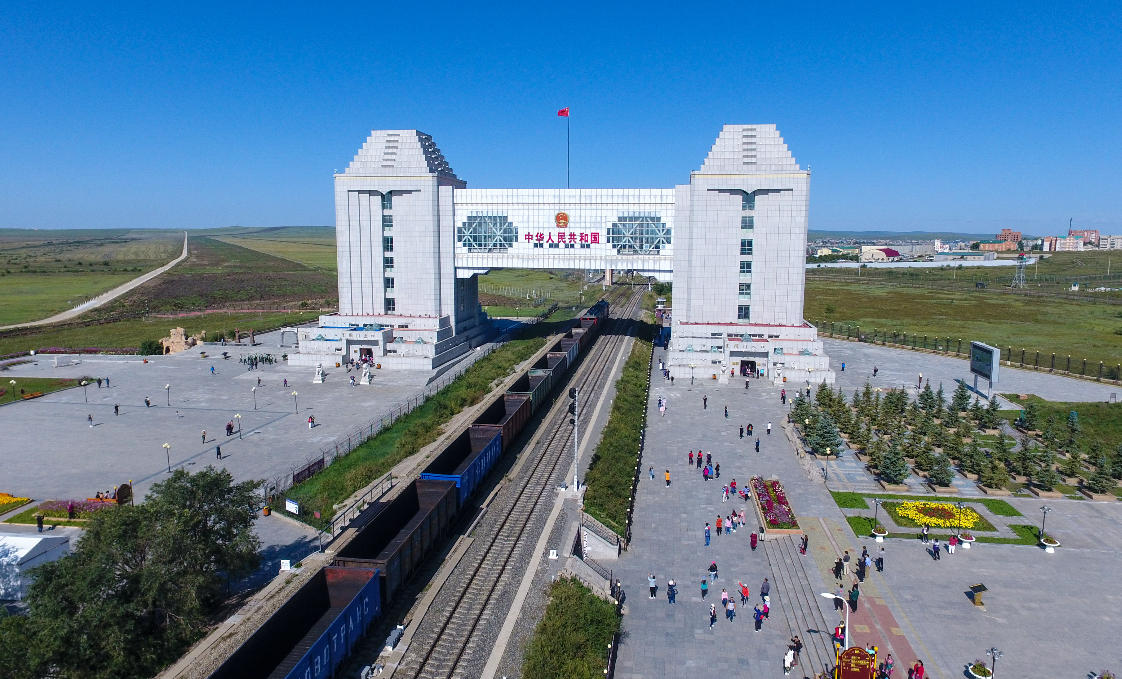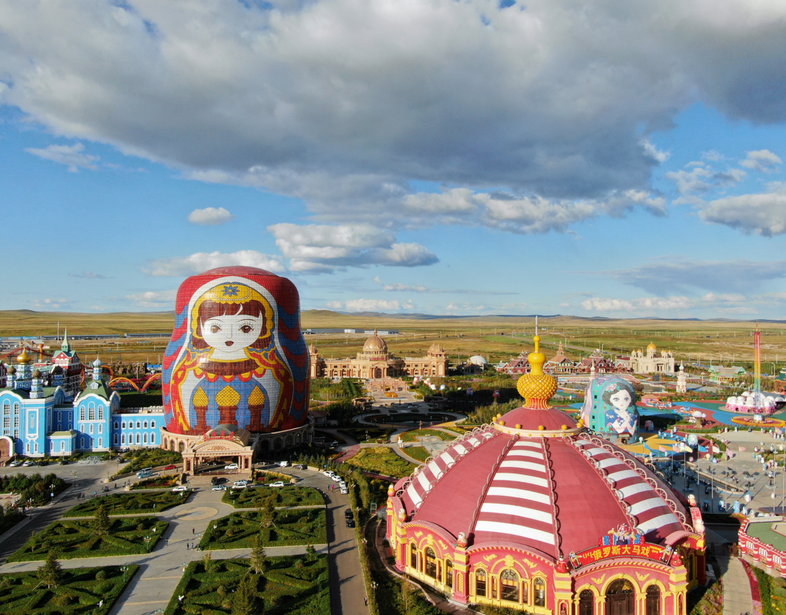
Aerial photo taken on Sept. 7, 2018 shows a square decorated with oversized Russian Matryoshka dolls in Manzhouli, a border city between China and Russia, in north China's Inner Mongolia Autonomous Region. (Xinhua/Zou Yu)
China, Russia and Mongolia inked a development plan on June 23, 2016 to build an China-Mongolia-Russia Economic Corridor (CMREC) linking the three neighbors, pledging to boost transportation connectivity and economic cooperation in border regions. The CMREC is the first multilateral cooperation plan to form part of the Belt and Road Initiative.
As an important component of the Silk Road Economic Belt, the CMREC aims to align the Belt and Road Initiative with Russia's proposal for a Eurasian Union and Mongolia's Steppe Road program. It creates an overarching platform to tap the potential and strengths of the three parties to expand development opportunities beneficial to all, promote regional economic integration, and enhance their collective competitiveness in the international market.
The CMREC has two key traffic arteries: One extends from China's Beijing-Tianjin-Hebei region to Hohhot and on to Mongolia and Russia; the other extends from China's Dalian, Shenyang, Changchun, Harbin and Manzhouli to Russia's Chita.
Seven major areas of cooperation are envisaged: transport infrastructure and connectivity; port construction, and customs and border inspection and quarantine services; industrial capacity and investment; trade; cultural and people-to-people exchanges; environmental protection; and cooperation with adjacent regions.
 Aerial photo taken on Aug. 29 shows the National Gate Resort in Manzhouli, north China's Inner Mongolia Autonomous Region. Manzhouli, a border city with Russia, has received five million tourist visits from January through July this year, up about 10.34 percent year on year. (Xinhua/Peng Yuan)
Aerial photo taken on Aug. 29 shows the National Gate Resort in Manzhouli, north China's Inner Mongolia Autonomous Region. Manzhouli, a border city with Russia, has received five million tourist visits from January through July this year, up about 10.34 percent year on year. (Xinhua/Peng Yuan)
(Source: China.org.cn)




 A single purchase
A single purchase









